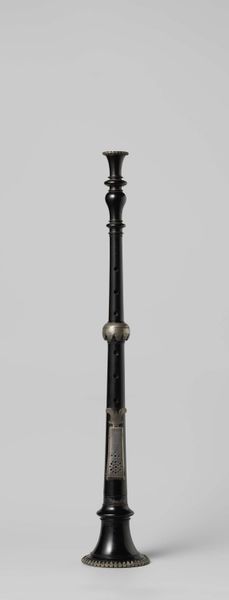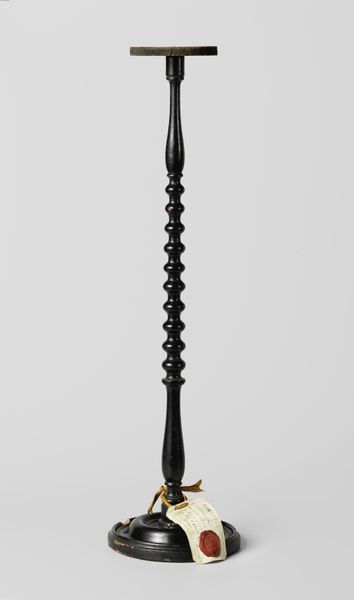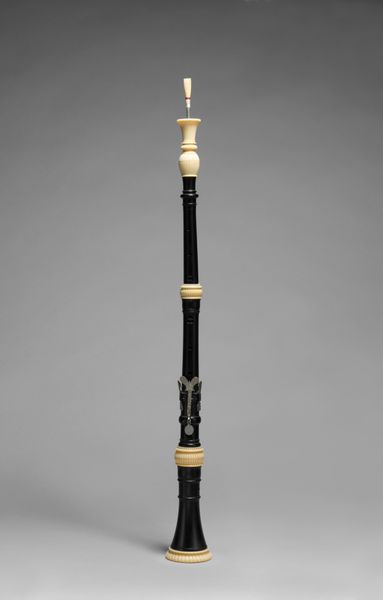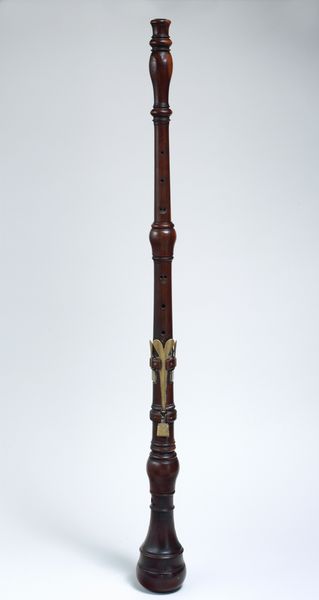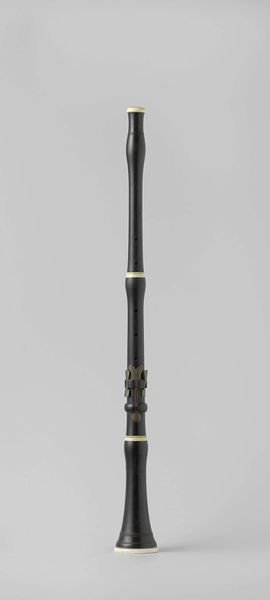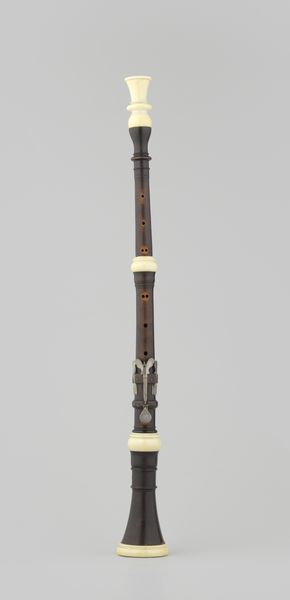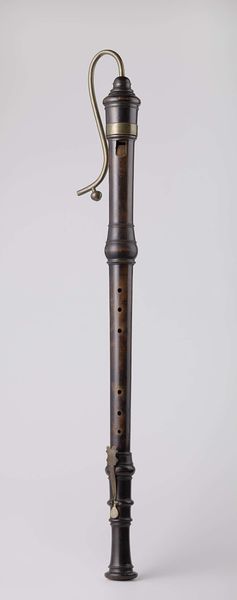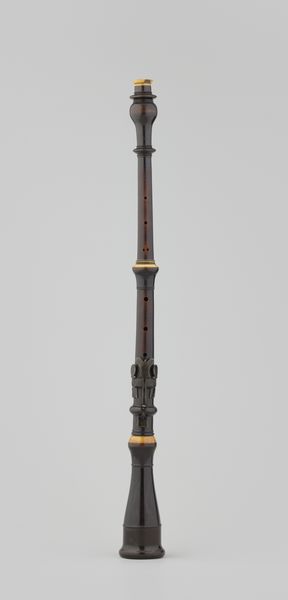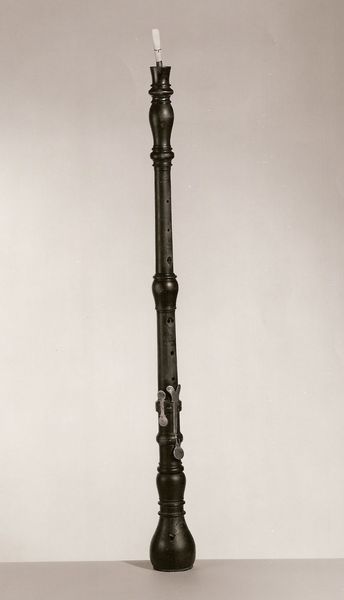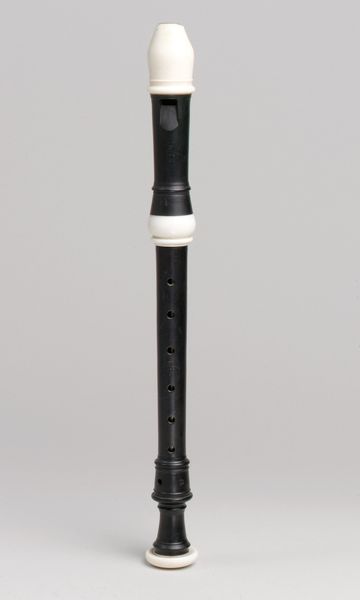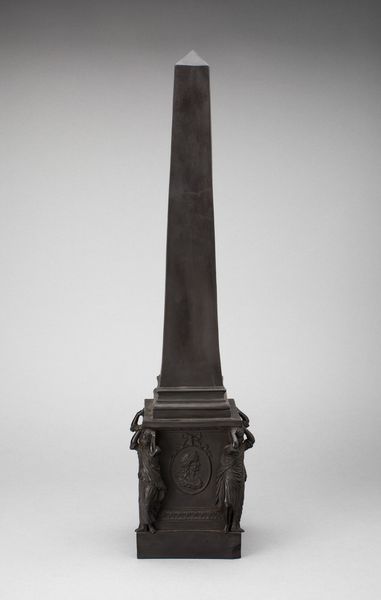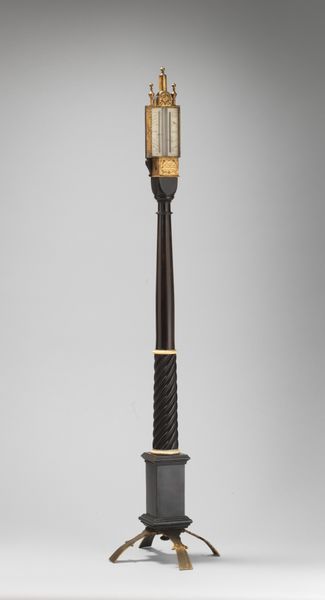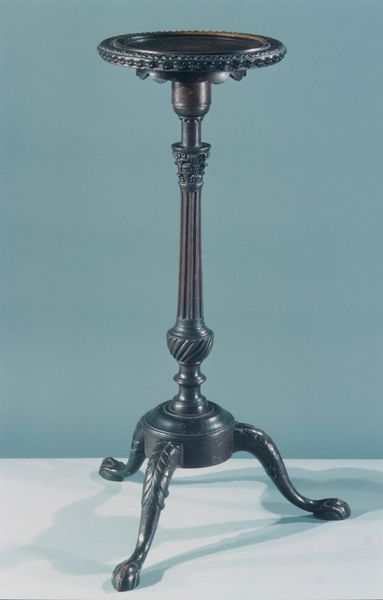
Standaard van het hoofdstel van het paard Alice dat op 12 augustus 1831 door de prins van Oranje werd bereden Possibly 1831 - 1838
0:00
0:00
anonymous
Rijksmuseum
carving, wood
#
carving
#
form
#
line
#
wood
#
decorative-art
Dimensions: height 56 cm, height 48 cm, diameter 13.8 cm
Copyright: Rijks Museum: Open Domain
Editor: Here we have an object from the Rijksmuseum, "Standaard van het hoofdstel van het paard Alice dat op 12 augustus 1831 door de prins van Oranje werd bereden", dating from 1831 to 1838. It's a carved wooden stand. It's fascinating how a functional item can also be a work of art. What strikes you when you look at it? Curator: The stand’s very existence provokes questions about production. Who was the carver? Was this a specialized craft, or a common skill within the equestrian world? And how did the social status of the horse and rider dictate the expense lavished on such an object? Editor: So you are considering not just what it is, but how it came to be and its place in the world? Curator: Precisely. The material – wood – and the act of carving inherently link it to manual labor, to specific workshops and economic realities of the time. Is it common for functional objects like these to be preserved this carefully? What does that tell us about our view of artisanship? Editor: I hadn’t considered it that way before. It really highlights how even seemingly simple objects carry stories about labor and value. Curator: Indeed. By analyzing the means of production and the social context of its creation, we challenge conventional notions of art as something separate from everyday life. Editor: That is insightful. I'm taking away that this isn't just about admiring its form, but about questioning its origins. Curator: Exactly. It compels us to consider how material culture reflects and shapes our world.
Comments
No comments
Be the first to comment and join the conversation on the ultimate creative platform.
